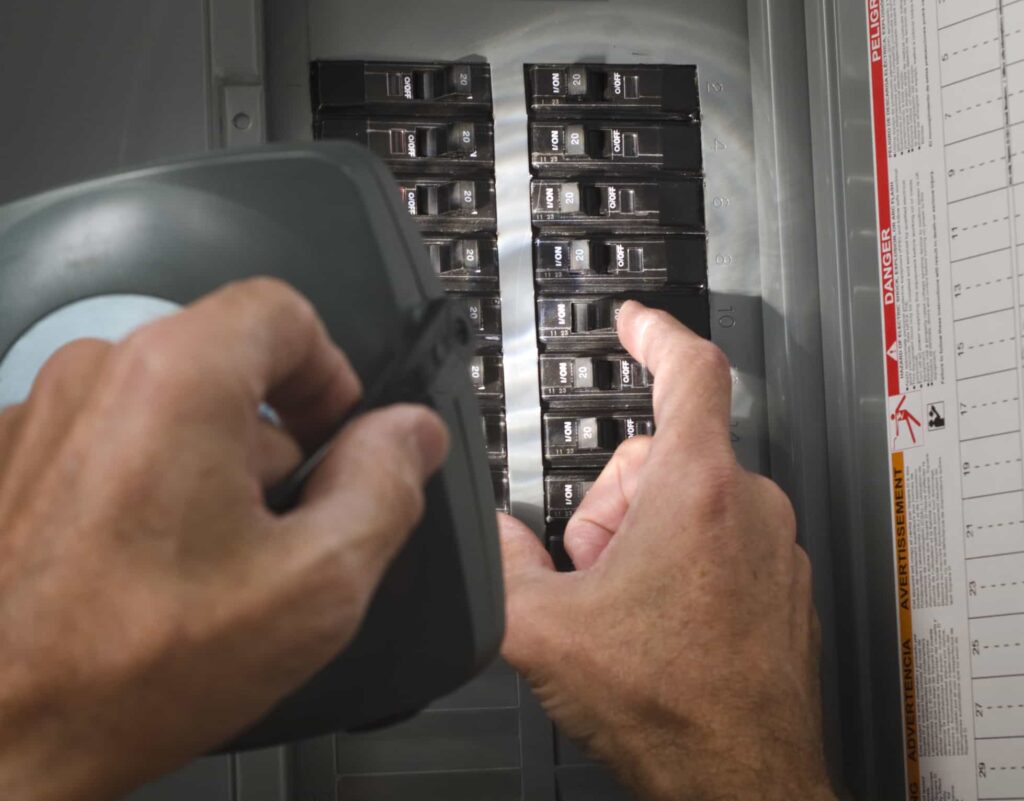Demystifying Electric Panels: Understanding Their Components
by siteadmin

Electric panels, also known as breaker boxes or electrical distribution panels, serve as the central hub for distributing electricity throughout a home or building. Understanding the components of an electric panel is essential for homeowners and professionals alike, as it enables effective troubleshooting, maintenance, and upgrades. In this blog post, we’ll delve into the key components of electric panels, shedding light on their functions and importance in electrical systems.
Main Breaker:
The main breaker is the primary safety device in the electric panel, responsible for disconnecting power from the entire electrical system in case of overload or emergency. It is usually located at the top or bottom of the panel and can be manually switched on or off to control the flow of electricity into the building. The main breaker is typically rated to handle the maximum electrical load of the building and serves as a critical safety feature to protect against electrical hazards.
Circuit Breakers:
Circuit breakers are individual switches within the electric panel that control the flow of electricity to specific circuits or areas of the building. Each circuit breaker is dedicated to a particular electrical circuit, such as lighting, outlets, appliances, or HVAC systems. In the event of an overload or short circuit, the circuit breaker automatically trips, interrupting the flow of electricity to prevent damage to electrical wiring and appliances. Circuit breakers come in various sizes and amperage ratings to accommodate different electrical loads and applications.
Bus Bars:
Bus bars are metal strips or bars located inside the electric panel that serve as conductors for distributing electricity from the main breaker to individual circuit breakers. The bus bars provide a centralized connection point for incoming and outgoing electrical wires, allowing for efficient and organized electrical distribution throughout the building. Bus bars are typically made of copper or aluminum and are designed to withstand high electrical currents without overheating or malfunctioning.
Neutral Bus Bar:
The neutral bus bar is a dedicated terminal within the electric panel that provides a common connection point for the neutral wires from all the circuits in the building. Neutral wires carry current back to the electrical source (e.g., utility transformer) and are essential for completing electrical circuits and maintaining voltage stability. The neutral bus bar ensures proper grounding and electrical balance in the system, helping to prevent electrical shocks, fires, and other hazards.
Grounding System:
The grounding system in an electric panel consists of grounding wires and grounding electrodes (e.g., ground rods) that provide a path for safely dissipating electrical currents to the earth. Grounding is essential for protecting against electrical faults, surges, and lightning strikes by redirecting excess electricity away from the building and into the ground. Proper grounding helps ensure electrical safety, equipment protection, and compliance with electrical codes and regulations.
Understanding the components of electric panels is crucial for ensuring the safety, reliability, and efficiency of electrical systems in homes and buildings. From main breakers and circuit breakers to bus bars, neutral bus bars, and grounding systems, each component plays a vital role in distributing electricity and protecting against electrical hazards. By familiarizing themselves with electric panel components, homeowners and professionals can effectively troubleshoot electrical issues, perform maintenance tasks, and make informed decisions about electrical upgrades and installations.
Electric panels, also known as breaker boxes or electrical distribution panels, serve as the central hub for distributing electricity throughout a home or building. Understanding the components of an electric panel is essential for homeowners and professionals alike, as it enables effective troubleshooting, maintenance, and upgrades. In this blog post, we’ll delve into the key…
Recent Posts
- Powering Proficiency: Training and Education for Electricians
- Powering the Future: Emerging Technologies in the Electrical Industry
- Ensuring Safety: Standards and Regulations in Electrical Work by Electricians
- Troubleshooting Demystified: Common Issues of Electric Panels
- Demystifying Electric Panels: Understanding Their Components
